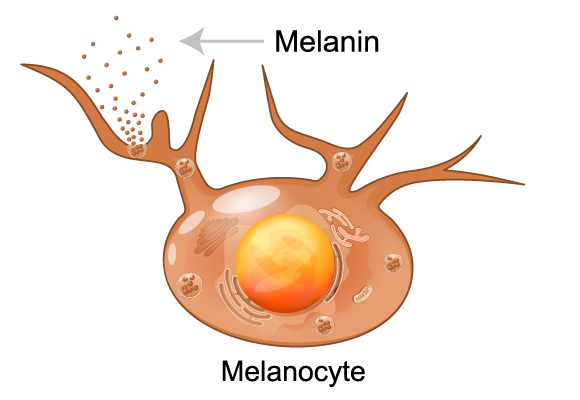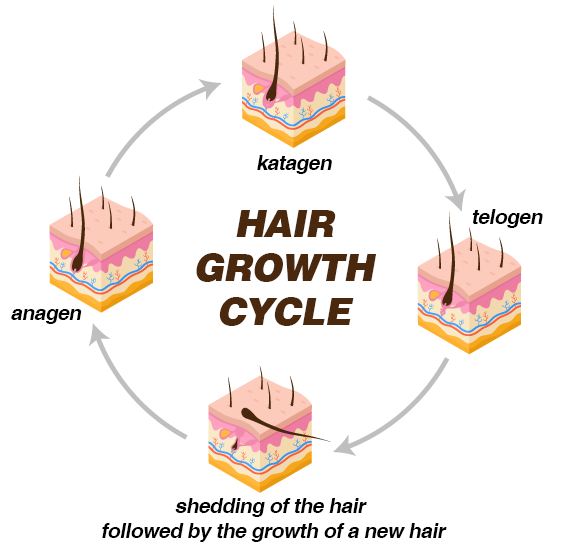It will happen to most of us: one day we’ll discover a gray strand of hair. Then another, and another. The growth mechanism of our hair, like other natural mechanisms in our body, ages with time, and one of the consequences is that our hairs gradually lose their color and turn gray. Today, as our knowledge and understanding of cell biology advances, we are gaining more and more insights into the process of hair graying, and possibly even getting closer to finding potential solutions to it.
More stories:
Already in ancient times, people sought to understand why hair turns gray or even completely gray as a person ages. Some common beliefs attributed this change to the accumulation of knowledge and wisdom that accompanies the passage of years. Perhaps due to this notion, the goddess of wisdom Athena, was often portrayed in Greek mythology as a female figure with silvery hair.
Another observation taught our ancestors to attribute the process to extreme emotional stress, and many stories, both ancient and contemporary, portray characters whose hair seemingly turns gray overnight after experiencing a particularly traumatic event.
Today, our knowledge reveals that the growth of head hair follows a dynamic, cyclical pattern, which to a certain extent can be compared to the changing of the seasons in temperate climates. Growth begins with the anagen stage, analogous to spring and summer, which spans 2–7 years and is characterized by active hair growth and lengthening. This phase transitions into the catagen stage, a brief transition stage lasting about 20 days, analogous to autumn, during which the hair follicle shrinks and detaches from the skin mechanism that nourishes it.
The subsequent telogen stage mirrors winter - a dormant stage of about three months, during which the hair sheds, setting the stage for the growth of new hair. Finally, a new hair is produced and a new cycle begins. This cycle may continue throughout our lives; the length and duration of each phase are affected, among other things, by factors such as age, stress, nutrition, and genetic predisposition.
3 View gallery


The ability to produce melanin deteriorates with age. A melanocyte cell producing melanin
(Photo: Designua, Shutterstock)
The color of our hair stems from a pigment called melanin. Human hairs develop within follicles embedded in our skin: tiny tube-like cavities that envelop the root of the hair. Inside the follicle, cells called melanocytes produce melanin, which penetrates the hair and gives it its distinct color. Hair color is determined by the type and amount of melanin present. There are two primary types of melanin: Eumelanin, which is brown or black, and Pheomelanin, which is yellow–orange. The combination of the two is responsible for the wide array of hair colors and shades, ranging from jet black to golden blonde and fiery red.
The color of stress
As mentioned, centuries ago people identified a potential link between hair graying and stress, particularly traumatic experiences. However, until recently there was no clear explanation for the mechanism by which emotional stress may impact the color of our hair.
For many years it has been recognized that during emergencies or perilous situations, our body initiates the “Fight or Flight” response - a neuro-hormonal reaction that primes the body to react swiftly to perceived threats. A study published in 2020, by scientists from Harvard University, which included Israeli researchers Inbal Rachmin and Aviv Regev, revealed that processes involved in this stress response could inflict lasting damage to melanocytic stem cells.
The research shows that under stressful situations, our nerve cells release a hormone called norepinephrine, which, among other things, can destroy the melanocytic stem cells residing in the hair follicles. Furthermore, the body’s physiological reaction to stress may lead to oxidative stress - an increase in the amount of free radicals that can impair cellular function. While normally our body is able to produce antioxidants to counteract this damage, during stressful situations their production diminishes, rendering melanocytes particularly susceptible to this effect.
What can we do?
Loss of hair color is a phenomenon closely related to age, and unfortunately, we haven’t yet discovered a way to halt the aging process. However, this does not mean there are no proposed solutions to combat the disappearance of pigment from our hair.
3 View gallery


A dynamic, cyclical process that continues for years. The stages of hair growth
(Photo: Designua, Shutterstock)
The most common solution is hair dyeing. While this method doesn't stop hair from turning gray, it effectively conceals the graying process. Some studies suggest that deficiencies in vitamins D, B12, and E, as well as a lack of minerals such as iron and copper, may lead to oxidative stress, akin to that experienced in stressful situations, possibly accelerating the graying process, at least for some individuals.
In addition, medical conditions such as thyroid imbalances, autoimmune disorders, and various dermatological diseases can expedite the process of hair graying. In such cases, it is obviously advisable to consult a physician. It is recommended for everyone to adopt a healthy lifestyle that includes avoidance of smoking and incorporating activities such as exercise, meditation, or yoga, which help alleviate mental stress.
In pharmacies and natural health stores, one can find a plethora of products and "natural solutions" claiming to decelerate the graying process. However, as of now, we're unaware of any such treatments, the efficacy of which has been successfully proven by rigorous scientific evaluation. Some natural therapists advocate for diets rich in antioxidants and the use of certain essential oils, arguing that they may slow down hair graying. Yet, the scientific validity of these claims remains uncertain.
Every new finding brings us one step closer to understanding the intricate biological and genetic processes of hair graying, enabling us to pinpoint its causative factors and mechanism. Perhaps in the future we will eventually devise methods to rejuvenate melanin production in gray hairs, not only reclaiming our natural hair shade but even bestowing upon us vibrant, unexpected shades to our locks.
- Content distributed by the Davidson Institute of Science


